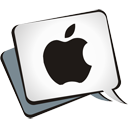In the world of productivity software, two tech giants dominate the conversation: Apple and Microsoft. Apple’s Pages, Numbers, and Keynote come preinstalled (and free) on most Macs and iPads, offering elegant tools for word processing, spreadsheets, and presentations. Meanwhile, Microsoft’s Word, Excel, and PowerPoint are the longtime industry standards—widely used in offices, schools, and institutions across the globe.
But how do they really compare? Whether you’re a student, a business professional, or someone just trying to choose the right tool for your next project, here’s a breakdown of how these office suites measure up.
Pages vs. Microsoft Word: Sleek Design vs. Formatting Powerhouse
Apple Pages is a clean, minimalistic word processor that emphasizes design and ease of use. It’s ideal for users creating visually appealing documents such as brochures, newsletters, or resumes. Pages offers seamless integration with iCloud, Handoff between Apple devices, and collaboration through real-time editing.
Microsoft Word, on the other hand, is the go-to for professional-grade documents. With extensive formatting tools, mail merge capabilities, and wide compatibility with third-party plugins, Word remains the heavyweight for legal documents, academic papers, and business reports.
Key Differences:
- Compatibility: Word is more widely accepted in professional environments.
- Templates & Design: Pages shines with elegant, Apple-designed templates.
- Ease of Use: Pages is more intuitive for casual users; Word is more powerful for advanced formatting and automation.
Numbers vs. Microsoft Excel: Style vs. Substance?
Apple Numbers takes a visual, layout-first approach to spreadsheets. Rather than focusing on a giant grid like Excel, Numbers lets you place multiple tables, charts, and graphics freely on a canvas. It’s excellent for presentations, reports, and lighter data tasks.
Microsoft Excel is the undisputed king of spreadsheet software. It supports a deep library of functions, pivot tables, data analysis tools, and scripting through VBA (Visual Basic for Applications). Excel is indispensable for data analysts, accountants, and power users.
Key Differences:
- Functionality: Excel is vastly more powerful for data modeling and advanced calculations.
- Design: Numbers offers more flexibility in layout and visual presentation.
- Learning Curve: Excel has a steeper learning curve but a higher ceiling.
Keynote vs. Microsoft PowerPoint: Presentation vs. Performance
Apple Keynote is known for producing gorgeous, cinematic presentations. With smooth animations, elegant templates, and intuitive controls, Keynote is a favorite among creatives, educators, and Apple enthusiasts. It runs beautifully on macOS and iOS, and presentations often look more polished with less effort.
Microsoft PowerPoint offers more customization, more advanced animation sequences, broader compatibility, and a deeper feature set. It’s a corporate standard and supports everything from simple decks to complex multimedia presentations.
Key Differences:
- Design Quality: Keynote presentations often look better out of the box.
- Feature Set: PowerPoint supports more customization and advanced features.
- Cross-Platform Use: PowerPoint is more compatible with Windows, web, and enterprise systems.
Cross-Platform Compatibility
This is where Microsoft Office wins easily. Word, Excel, and PowerPoint are available across Windows, macOS, iOS, Android, and the web. Apple’s suite is best experienced on Apple devices. While iCloud.com offers online versions of Pages, Numbers, and Keynote, they’re limited and not as widely supported.
If you need seamless document sharing with a diverse group—including Windows users—Microsoft Office is the safer bet.
Cost and Accessibility
- Apple’s Office Apps: Free with any Apple device, and updates are included.
- Microsoft Office: Requires a subscription (Microsoft 365) or one-time purchase. Office 365 also includes Outlook, OneNote, and 1TB of OneDrive storage.
Which One Is Right for You?
- Choose Apple’s Suite if you work primarily within the Apple ecosystem, value beautiful design, and have relatively simple productivity needs.
- Choose Microsoft Office if you need maximum compatibility, professional-grade tools, or are working in a corporate or academic environment where Office is the standard.
The Bottom Line
Apple’s Pages, Numbers, and Keynote are beautifully designed tools that work exceptionally well within the Apple world. They’re free, user-friendly, and capable of creating impressive documents and presentations. But when it comes to power, compatibility, and advanced functionality, Microsoft Word, Excel, and PowerPoint still set the bar.
In the end, the best tool is the one that fits your workflow—and for many users, having both suites available offers the best of both worlds.
If you liked this article, please consider sharing it with your friends and leaving a comment below. Also, don’t forget to “Like” us on Facebook and add the Apple Tech Talk channel to your Apple News app.


Leave a Comment
You must be logged in to post a comment.